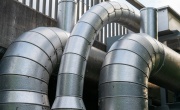Number of materials facilities complying with reporting regs still unstable
 The number of materials facilities (MF) reporting input and output sampling figures has again dropped according to data published by the Waste & Resources Action Programme (WRAP).
The number of materials facilities (MF) reporting input and output sampling figures has again dropped according to data published by the Waste & Resources Action Programme (WRAP).
The data released today (11 August) covers the first quarter of 2016 (January to March) – the sixth reporting period since the amended Environmental Permitting (England and Wales) Regulations 2014 required qualifying MFs to provide quarterly details of the mixed waste tonnage received from each supplier and output tonnage for defined material streams.
The idea behind the change in regulations was to create greater transparency around material quality to enable a stronger evidence base behind decisions, encourage competition in the market and lead to higher quality recycling overall.
Facilities have now been sampling and reporting for 18 months, and the issue of participation has continued throughout. Under the regulations, MFs that qualify for the reporting obligations are those that receive 1,000 tonnes or more of mixed waste material for sorting in four consecutive reporting periods.
Results from the first few reporting periods drew suggestions that many eligible facilities were not reporting their waste, and the WRAP commentary into the Q3 2015 results admitted that ‘the number of notified sites in England is significantly lower than originally anticipated’.
85 English facilities reported data in Q1 of 2016, compared to 90 in the prior three month period, while in Wales the number of facilities reporting continued to rise slowly, with 12 providing data, up from 11 in Q4 2015 and 10 in Q3 2014.
Data
The data that has been compiled by WRAP’s Materials Facility Reporting Portal is once again similar to those from the previous quarter, with the total tonnage and make-up of input and output materials from facilities staying reasonably consistent since the outset of the regulations.
According to WRAP’s commentary of the reporting period, the waste supplied to the responding English MFs was attributed directly to 220 local authorities and 285 other suppliers like waste management companies or other waste facilities.

In Wales, 83,536 tonnes was received by the 12 facilities. 88.1 per cent of this consisted of the targets materials, slightly down from 88.4 per cent in Q4 2015. Just 3.8 per cent of the input material in Wales was non-recyclable, significantly less than half of the English figure.
The English percentage of target material has wavered been between 86.0 and 86.8 per cent since Q4 2014, but the amount of non-recyclable material has gradually increased since the same period, from 7.7 per cent to the current figure of 9.2 per cent. In contrast, the Welsh target material rate has dropped from 90.6 per cent in Q4 2014 to 88.1 per cent this time around, while the non-recyclable material level has fluctuated between 5.0 and 3.5 per cent.

While the purity of these SOM outputs (which contain some materials that are non-target and non-recyclable) has largely remained consistent throughout the reporting in England, Wales has seen some variation in metals (an increase of 6.3 per cent) and glass (a reduction of 7.8 per cent) in the past six quarters, though WRAP notes that this is more noticeable due to the small sample size of facilities.
The WRAP commentary on the MF reporting figures for Q1 2016 can be read on WRAP’s website.
The next set of data, for the second quarter of 2016, will be released in November.








